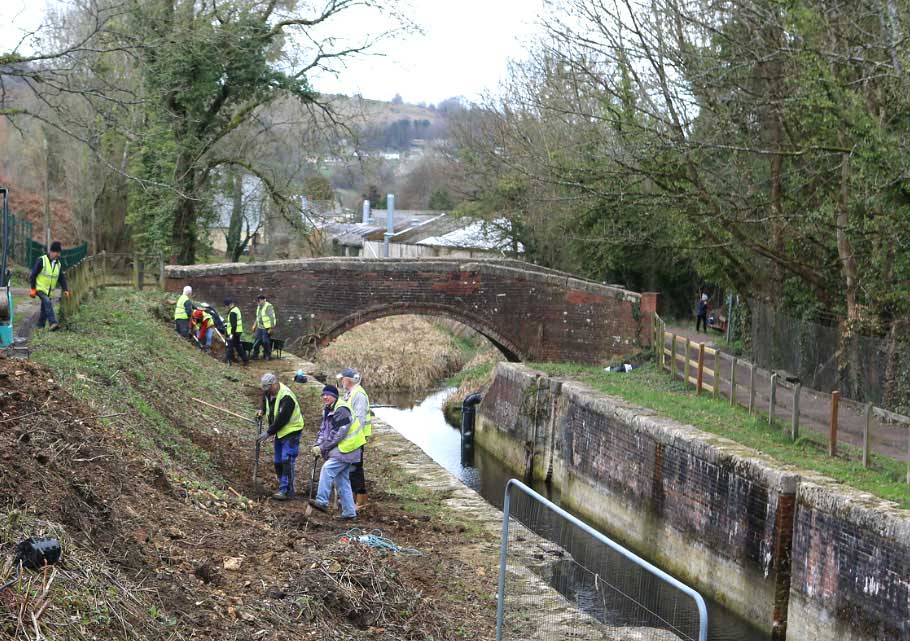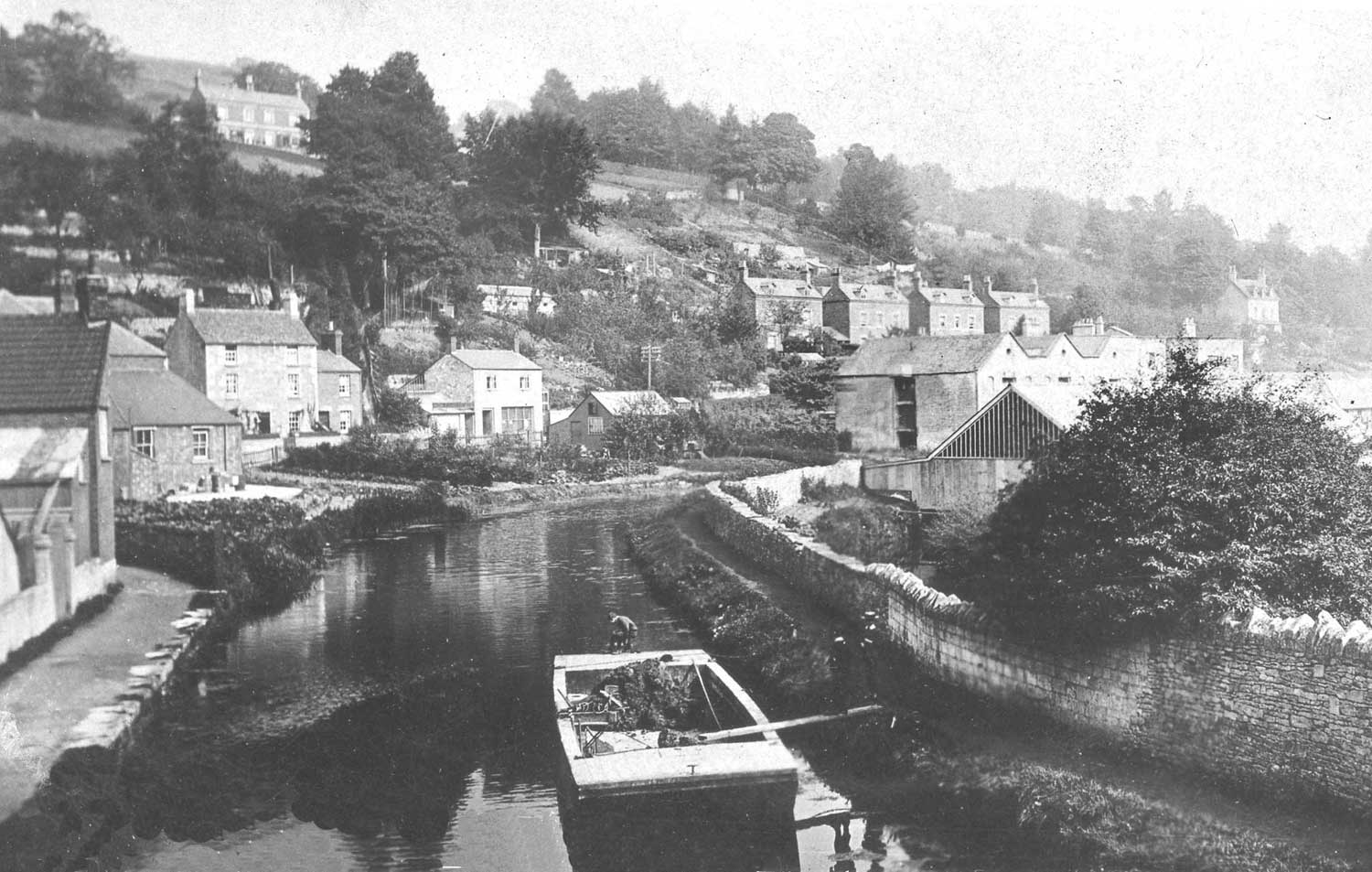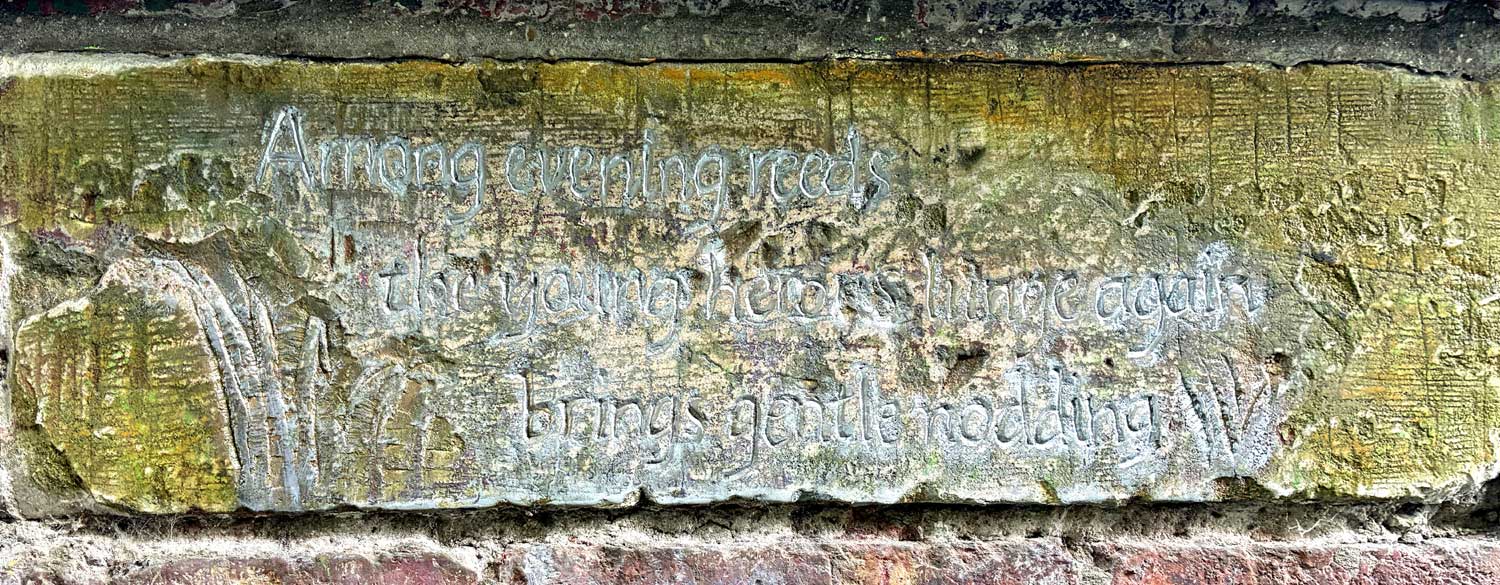The canal passes Brimscombe Mill on its way to Brimscombe Port.


The lock and bridge take their name from the Gough family, who owned Hope Mill and nearby land when the canal was constructed.
The family lived in a house up Brimscombe Hill, and they used the towpath and a private track over the bridge to travel between the two.
The picture shows Cotswold Canals Trust volunteers at work in 2019.
Solar panels beside the bridge can power a feed of water to the canal from the nearby millpond of Brimscombe Lower Mill.


The canal passes close to the buildings of Brimscombe Mill, where the world’s first machine for shearing the nap of woollen cloth was developed and patented in 1815. This invention rapidly replaced the use of hand shears and later inspired the development of the lawn mower.
Coal was delivered by canal, initially for heating water for dying and later also for powering a steam engine. The coal was discharged by two men carrying a handbarrow across the towpath.
The mill continued to produce fine woollen cloth into the 1930s. The old buildings are now home to The Long Table – a Community Interest Company.


This twentieth-century view from Brimscombe Bridge shows the canal curving round towards Brimscombe basin, with a towing path on each side.
The path on the right led to the south side of Brimscombe basin. The path on the left skirted private property known as the West Wharf to reach the warehouses north of the basin.
The Canal Company did not administer the West Wharf, which did not benefit from the reduced tonnage charges on goods passing to or through the basin just around the corner.
In the foreground is a typical workboat used by workers when maintaining the towpath and the adjoining hedge.
History of Brimscombe Mill from https://www.british-history.ac.uk/vch/glos/vol11/pp119-132.
Heron's Lunge

On a stone in the wall of Brimscombe Mill, Jim Fenton has inscribed a Haiku-style poem by R P Miller:
Among evening reeds
The young heron’s lunge again
Brings gentle nodding.